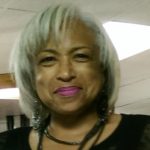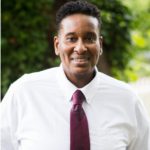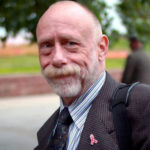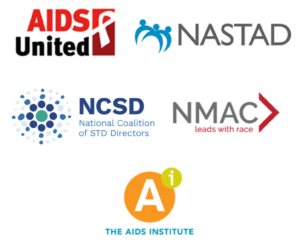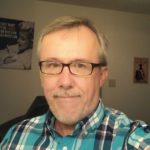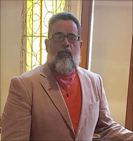April 9, 2019
Dear Dr. Redfield:
One year ago, I wrote an Open Letter asking you to create a federal plan and the necessary funding to end the HIV epidemic in America. Thank you for your response and commitment to make this real.
Last week you spoke at AIDSWatch and got called out by community. Welcome to the family. As a person who gets called out frequently, I know it can be confusing. HIV disproportionately impacts oppressed communities. We speak up and call out leaders because we are hurting. Bob, you’ve worked on the frontlines of the epidemic in Baltimore, so I know you understand. If you didn’t hear it, I want to say thank you for speaking at AIDSWatch. As messy and challenging as community can be, we are the only road to ending the epidemic.
We come from very different worlds, yet this virus has brought us together to collaboratively figure out solutions to end an epidemic. That is the messy part of HIV; people who would normally not socialize have to come together to talk about some of the most intimate matters. I remember going to a retreat where I had to talk about sex with Dr. Jim Curran. I am not sure who was more uncomfortable. Jim blushed and stuttered as told me that in his day, he was a “hot” number. I could see it and I’m sorry Jim for outing you. He shared personal information because he knew it would build a bridge to someone with a very different life experience.
The solution to ending the epidemic is about building bridges with people who are different from you. It’s about understanding that race, gender, gender identity, and sexual orientation are more than classifications. They are the lens that shape our view of the world. Unfortunately, our contributions are often minimized because we are different. Understanding this dynamic is key to ending the epidemic. While the solution is biomedical, it has to happen in oppressed communities that don’t trust the government or the healthcare system. You may not believe your race gives you privilege, but the communities you need to reach would beg to differ. To reach people of color, you have to understand how race impacts our world and the choices we have to make. Just this week there is talk of bringing in the National Guard to St Louis to stop the violence. Let’s get real about what it means to end the HIV epidemic in this environment.
It is not just a matter of prescribing meds. Solutions must address the social dynamics that keep us separate. I get concerned that we will prioritize prescribing PrEP and not address the reality that only 34% of the people who start PrEP stay on their medication longer than 12 months. Why have one third of the people living with HIV fallen out of healthcare or are unaware of their HIV status? The solution is much more complex than handing out drugs.
Early in the HIV epidemic, we quickly learned that the medical model did not work for people living with HIV. As a result, our movement built new systems of healthcare. Thanks to the Robert Wood Johnson Foundation, the continuum of care model became the standard for HIV care and treatment. This new model was created by the HIV community because taking care of people we loved showed that our friends needed more than the medical model could provide. A network of social services like buddy programs, legal services, nutrition, and housing were key to our ability to help people live longer.
The HIV community had to innovate because the old models did not work for us. We cannot afford to go back to a medical model for the solution to end the HIV epidemic. We need solutions that reach gay men, particularly young gay men of color, the transgender community, people over 50 living with HIV, women, particularly black women and Latinas, and drug users. As we learned during the beginning of the epidemic, traditional models do not work when you need to reach oppressed communities.
The Positive Women’s Network, the National Working Positive Coalition, the Sero Project, and other PLWH coalitions fight for the value of “nothing about us without us.” These words apply to people of color, the transgender community, and people on PrEP. In fact, they apply to all the communities highly impacted by HIV. NMAC is concerned that decisions are being made without community. The format for the listening sessions does not allow for meaningful interchange. Leaders at the CDC are making decisions about how community planning will work, which interventions will be prioritized, and what type of capacity building will be used, all important issues that should include community. Limiting community input to community planning misses the whole point. Your process of developing a plan to end the epidemic should mirror the values and principles you ask of the community planning process. It should bring community and government together to make the key decisions.
I’ve been writing my Ending the Epidemic e-newsletter to speak indirectly to the decision makers. Please know how much I want you to succeed, but it won’t happen without us. We are about to attempt the impossible: to end an epidemic without a vaccine or a cure; to reach 400,000 PLWH who have fallen out of care or are unaware of the status and 975,000 more people who can benefit from PrEP. Many of the folks we need to reach are some of the most marginalized in America. They don’t trust the government because they believe the government runs the systems that oppress and discriminate against them.
Thank you for agreeing to speak at the opening of the 2019 United States Conference on AIDS. You should expect similar concerns will be raised; however, I know you will rise to the challenge. This year’s Opening will be staged like the Sunday Morning Talk Shows. You will be interviewed by a moderator. We are trying to get Don Lemon. Maybe we can’t get people to cheer for you, but they also don’t cheer for me. Every year I get called out. Federal leaders need to attend USCA because we cannot end the epidemic without reaching the communities that are highly impacted by HIV. The only way to get to them is through us. A smarter woman might say maybe we should work together.
Yours in the struggle,
Paul Kawata
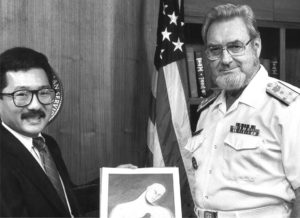
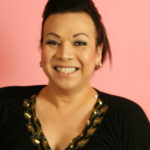 I was fortunate to receive a scholarship from 50+ Strong and Healthy Program to attend this year’s 2019 National HIV Prevention Conference in Atlanta, GA. It has been a while since I attended this particular conference. I also was given the opportunity to attend last year’s USCA conference thru the 50 + Strong and Healthy Program.
I was fortunate to receive a scholarship from 50+ Strong and Healthy Program to attend this year’s 2019 National HIV Prevention Conference in Atlanta, GA. It has been a while since I attended this particular conference. I also was given the opportunity to attend last year’s USCA conference thru the 50 + Strong and Healthy Program.
